Table of Contents
Types Of Pipes:
Pipes are the major components of a plumbing system. The types of pipes normally used in the water distribution systems are described below.
- Cast Iron Pipes.
- Steel Pipes.
- Galvanized Iron Pipes.
- Copper Pipes.
- Polythene Pipes.
Detailed descriptions of these pipes are as follows.
1. Cast Iron Pipes:
Cast iron pipes or CI pipes are widely utilized for the distribution of water because they are less expensive, corrosion-resistant, and long-lasting. CI pipes are chiefly produced by the following four techniques.
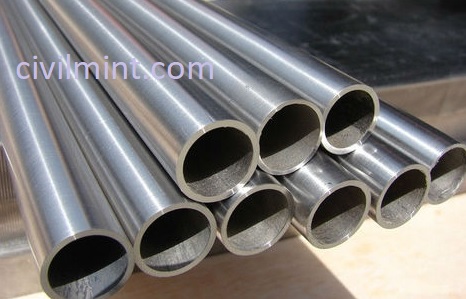
- Horizontally cast (MC ware pipes).
- Vertically cast (Pit cast in sand molds).
- Centrifugally cast in sand lines molds spun type.
- Centrifugally cast in water-cooled molds.
Usage of horizontally cast CI pipes is presently pretty much outdated, that’s why they are infrequently produced these days. Centrifugally cast pipes are most broadly used because they have a more grained dense structure and uniform thickness. Generally, CI pipes are 3-7 m long, so much heavy, and need extra precaution to avoid damage while transporting and creating connections.
2. Steel Pipes:
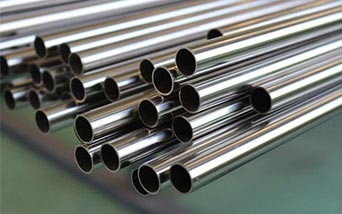
Steel pipes are used in water mains circumstances where the pipes are going through very high pressure ( More than 7 kg/cm2) and needed large diameter pipes. These pipes have more strength and less weight than CI pipes. Adequate treatments should be given to maintain antagonistic climatic conditions.
3. Galvanized Iron Pipes:
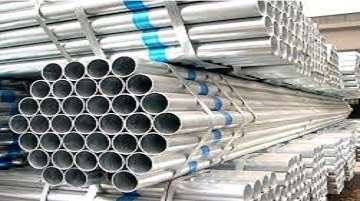
Galvanized pipes are also called GI pipes are fashioned steel pipes with zinc coating. GI pipes are mostly used for water supply and service connections.
4. Copper Pipes:
Copper pipes are most commonly used in hot water supply establishments. Some features of these pipes are as follows:
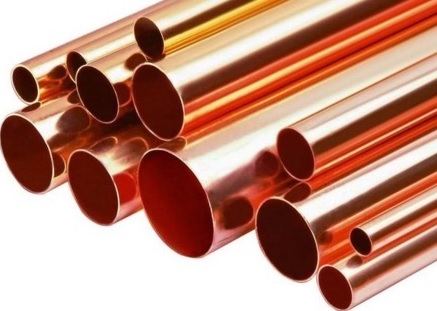
- They own high tensile strength.
- They can be bent very easily.
- Copper pipes can be utilized in the thin walls.
- Copper pipes are sometimes chromium-plated to better their appearance and to match with the chromium-plated water supply fittings.
5. Polythene Pipes:
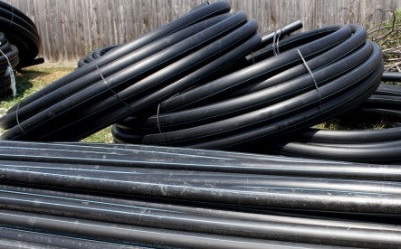
Polythene and PVC pipes are being used progressively nowadays for cold water supply inside and outside works. These pipes are lightweight, cheaper, corrosion-resistant, and need no threading for making any connections.
Besides these, there are other pipes generally utilized for water distribution such as asbestos cement (AC) pipes, reinforced concrete (RCC) pipes, prestressed reinforced concrete (PSC) pipes, etc. The selection of the types of pipe for utilizing any purposes is adopted as per design criteria, material availability, cost, and other comparative variables.
Other Types Of Pipes In Water Supply And Plumbing System
1. CPVC (Chlorinated Polyvinyl Chloride) Pipes:
CPVC pipes are similar to PVC pipes, but they are made with an additional step that involves chlorination. This process makes the pipes more durable and able to withstand higher temperatures than standard PVC pipes. CPVC pipes are commonly used in hot water supply systems, such as those found in residential and commercial buildings.
2. PEX (Cross-linked Polyethylene) Pipes:
PEX pipes are made of a flexible plastic material that is easy to install and resistant to corrosion. They are commonly used in residential water supply systems, especially for applications that require flexibility or where copper pipes are not feasible. PEX pipes are also popular for their durability and resistance to freezing and thawing.
3. HDPE (High-density Polyethylene) Pipes:
HDPE pipes are made of a plastic material that is strong, durable, and resistant to corrosion. They are commonly used in municipal water supply systems, as well as in industrial and agricultural applications. HDPE pipes are also popular for their flexibility, which makes them less likely to crack or break under pressure.
4. ABS (Acrylonitrile Butadiene Styrene) Pipes:
ABS pipes are made of a plastic material that is lightweight, easy to install, and resistant to chemicals. They are commonly used in low-pressure applications, such as drain pipes in residential and commercial buildings. ABS pipes are also popular for their affordability and low maintenance requirements.
5. PP (Polypropylene) Pipes:
PP pipes are made of a plastic material that is durable, corrosion-resistant, and able to withstand high temperatures. They are commonly used in industrial and chemical applications, as well as in residential plumbing systems. PP pipes are also popular for their resistance to chemicals, which makes them ideal for transporting corrosive materials.
6. PB (Polybutylene) Pipes:
PB pipes are made of a plastic material that is flexible, easy to install, and resistant to corrosion. They are commonly used in residential plumbing systems, especially for applications where copper pipes are not feasible. PB pipes are also popular for their affordability and resistance to freezing and thawing.
7. Ductile Iron Pipes:
Ductile iron pipes are similar to cast iron pipes, but are made with a different type of iron that is more flexible and able to withstand higher pressures. They are commonly used in municipal water supply systems, as well as in industrial and agricultural applications.
8. Brass Pipes:
Brass pipes are made of a metal alloy that is resistant to corrosion and able to withstand high temperatures. They are commonly used in residential and commercial water supply systems, as well as in industrial and agricultural applications. Brass pipes are also popular for their aesthetic appeal and resistance to wear and tear.
9. Concrete Pipes:
Concrete pipes are made of a composite material that is strong and durable, and able to withstand high pressure and corrosion. They are commonly used in municipal water supply systems, as well as in industrial and agricultural applications. Concrete pipes are also popular for their affordability and ease of installation.
10. Clay Pipes:
Clay pipes are made of a natural material that is strong and resistant to corrosion, but fragile and prone to cracking. They are commonly used in older homes and buildings, as well as in some municipal water supply systems. Clay pipes are also popular for their aesthetic appeal and historical significance.
11. Asbestos Cement Pipes:
Asbestos cement pipes are made of a composite material that includes asbestos fibers and cement. They are strong and durable, but have been largely phased out due to the health risks associated with asbestos exposure. Asbestos cement pipes were commonly used in municipal water supply systems, as well as in industrial and agricultural applications.
12. Lead Pipes:
Lead pipes were once commonly used in residential water supply systems, but have been largely phased out due to the health risks associated with lead exposure. Lead pipes are now only found in older homes and buildings, and are often replaced with copper or PEX pipes. Lead pipes are also prone to corrosion and leaks.
13. Polyethylene Pipes:
Polyethylene pipes are made of a plastic material that is strong, durable, and able to withstand high pressure and temperatures. They are commonly used in industrial and agricultural applications, as well as in municipal water supply systems. Polyethylene pipes are also popular for their resistance to chemicals and environmental stress cracking.
14. Fiberglass Pipes:
Fiberglass pipes are made of a composite material that includes glass fibers and resin. They are strong, lightweight, and resistant to corrosion and chemicals. Fiberglass pipes are commonly used in industrial and chemical applications, as well as in some municipal water supply systems. Fiberglass pipes are also popular for their durability and ease of installation.
15. Polyurethane Pipes:
Polyurethane pipes are made of a plastic material that is strong, flexible, and resistant to corrosion and chemicals. They are commonly used in industrial and chemical applications, as well as in some municipal water supply systems. Polyurethane pipes are also popular for their resistance to wear and tear and their ability to withstand extreme temperatures.
